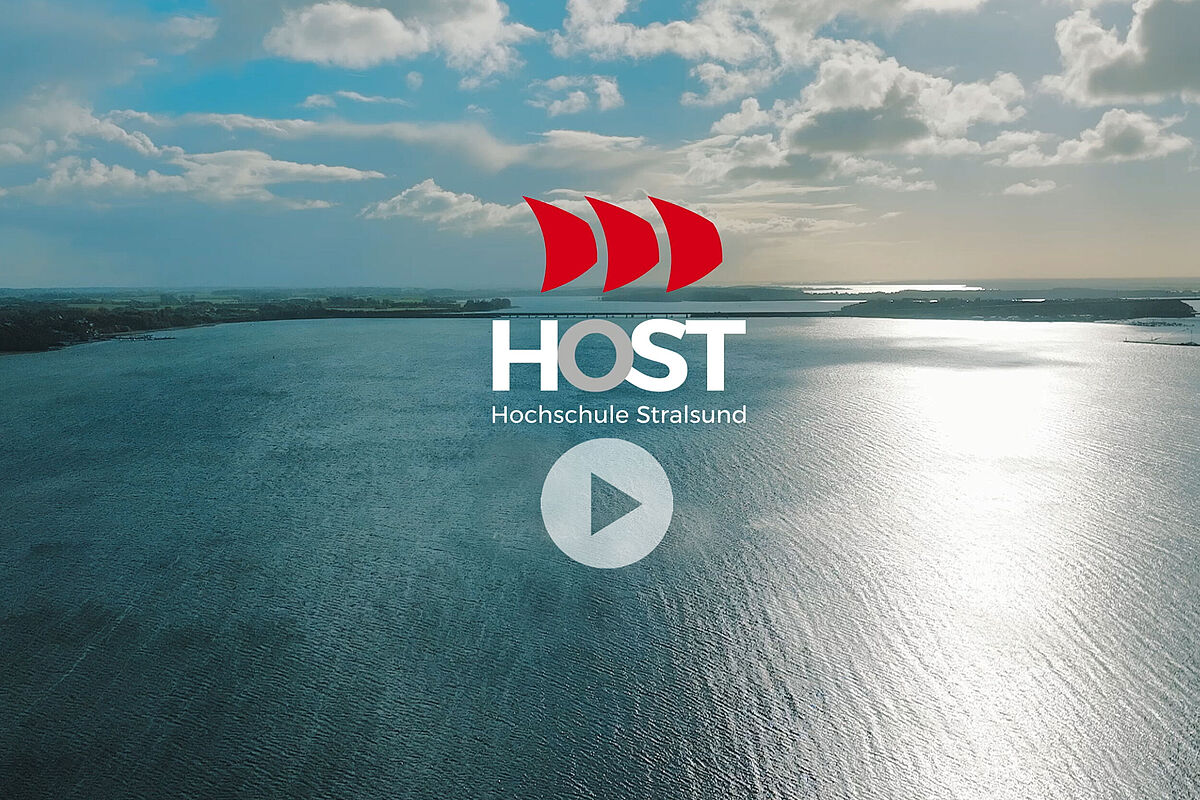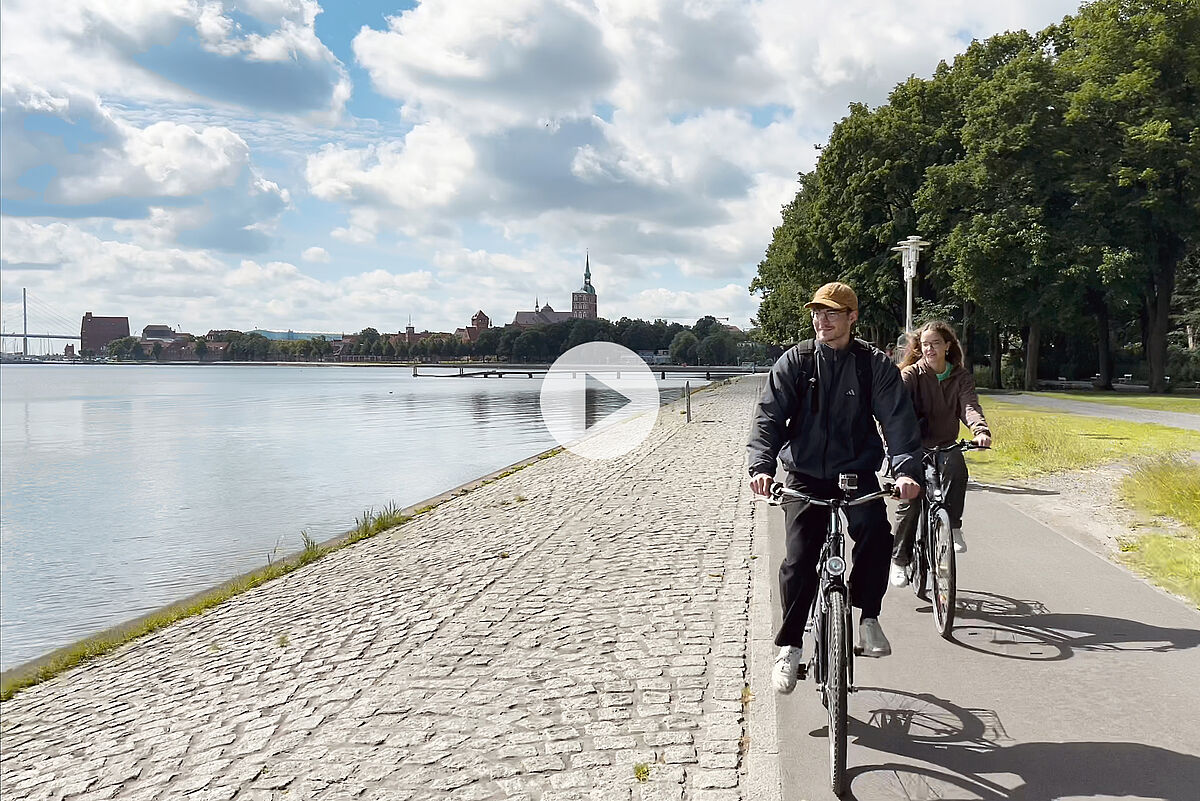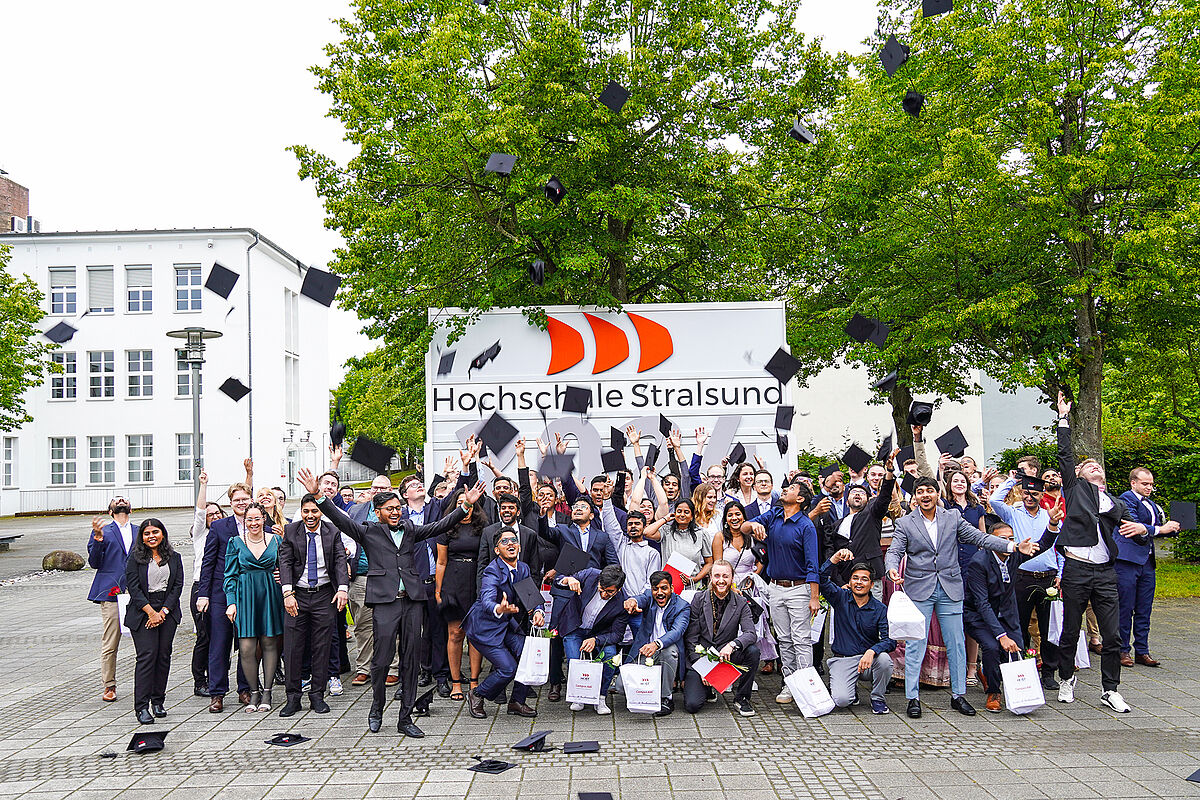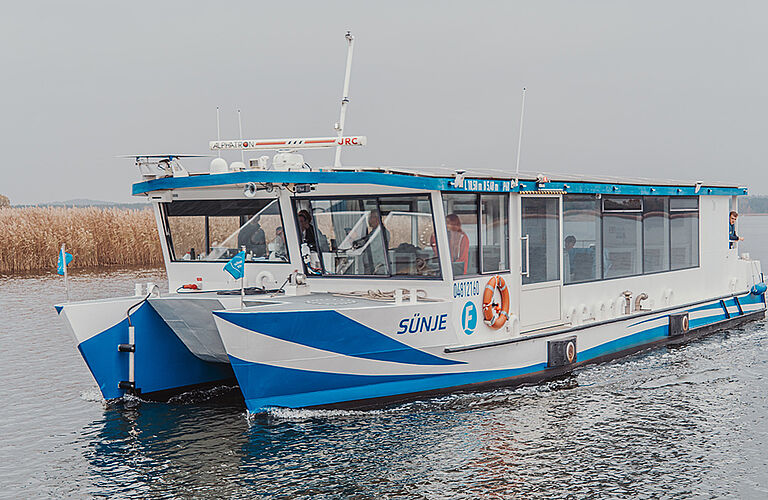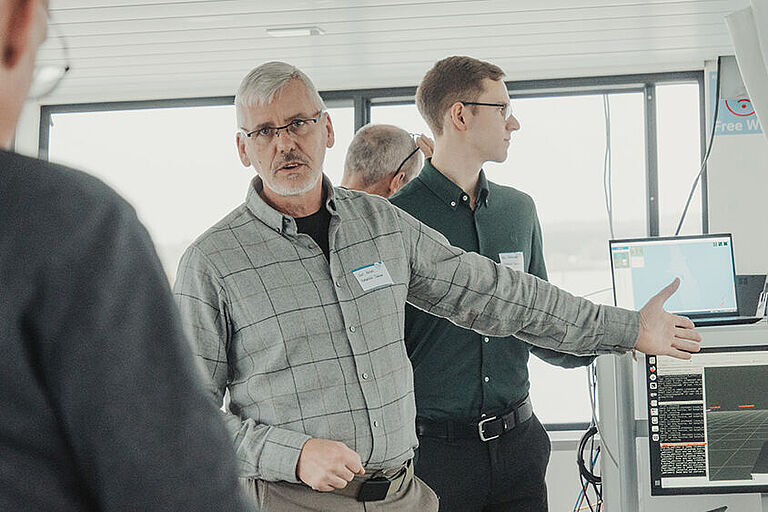It is one of the major projects at Stralsund University of Applied Sciences: 5G-PortVG. Since December 2021, representatives from the Faculty of Mechanical Engineering and the Faculty of Electrical Engineering and Computer Science have been working together on it.
"In three key projects, we have written a piece of future history for the ports and shipping in the Vorpommern region - in a team with eight colleagues and well-known partners such as the Weiße Flotte, NautiTronix, DEN GmbH as overall project management, atene KOM GmbH and Witeno GmbH," states Prof. Dr.-Ing. Jens Ladisch. The Vice Rector for Research and Development at HOST is responsible for project management at the university. The potential of the new mobile communications standards has been transferred to the area of shipping and port logistics in the project in order to offer future-proof, innovative and sustainable solutions there.
Assistance-controlled driving of a ferry
The high data transfer rates and the high reliability of 5G technology open up new possibilities for process automation and assistance systems. In concrete terms, this means that the automated driving of a ferry from the White Fleet has been tested. In the future, the "Sünje" could be assisted. There have already been very successful real-life tests for this. The whole thing looks like this in simplified terms: sensors on board, combined with onshore sensors, analyze the environment and use AI to classify objects and people on the water into categories relevant to maritime shipping. In maritime law, avoidance rules are defined differently depending on the category of the respective road user. Here it makes a difference whether two motor-driven watercraft or a motor-driven ship and a sailing boat meet. Different avoidance rules apply in both cases. The use of intelligent assistance systems helps to increase safety and support complicated decision-making processes.
The maritime sector is particularly well suited to testing these new possibilities due to the annual growth in the volume of handling at seaports and the associated increase in traffic, explains Prof. Dr.-Ing. Ladisch. The port sector also serves as a "test field" for logistics, transport and service processes that could also be used in other (economic) areas.
The campus network
All project components are connected by 5G campus networks, one on Lake Sellin and one directly on the HOST campus. A 5G campus network ensures secure, fast and stable data exchange. These were built in 2023, went into operation afterwards and are used in the field of research - at the university primarily for monitoring and controlling autonomous transport vehicles, for exchanging data with maritime systems and for transmitting extensive sensor data as part of the 5G project. It is also possible to use it for other research applications.
Background
5G networks can be operated locally and self-contained. In these cases, they use allocated license-based frequencies that are awarded by the Federal Network Agency. Due to the location-specific scope of the frequencies, these networks are limited to a specific area, as in the case of HOST: the campus. The campus networks with their individual frequencies can be specifically adapted to the requirements of the environment, as they are not intended for use by the public.
The three lead projects
In parallel flagship projects, the use of 5G mobile communications in the three central port segments - sea, quayside and land - was tested using laboratory models and in pilot tests. Great attention was paid to the development of semi-autonomous or autonomous assistance systems for ship management and port logistics. Furthermore, the testing of value-added services is intended to show additional potential for the service sector.
In the flagship projects "Quayside Sea", "Quayside Land" and "Value-Added Services", several models and ideas were developed or tested, such as the loading station model, in which unmanned vehicles are used on land in the ports for the transport of goods using automated driving.
For example, dynamic route adjustment to avoid collisions was tested using a model of an autonomously driving ship. A ship simulator approved for accredited training courses for naval officers and captains was also used to realistically simulate traffic situations at sea and in the port area.
Sensor technology was also developed for the land-based port area, which can be used to recognize and classify objects.
As a value-added service, for example, an interactive information system with real-time data for tourists was set up and an interactive virtual 3D bridge was created.
The overall project ran in stages and in parallel in the laboratory, pilot and practice. Results, i.e. research work and ideas, are openly shared with politics and industry so that 5G-based business models can be put into practice. The team and partners are currently looking for projects in which the developed technologies can be tested in a practical way.


